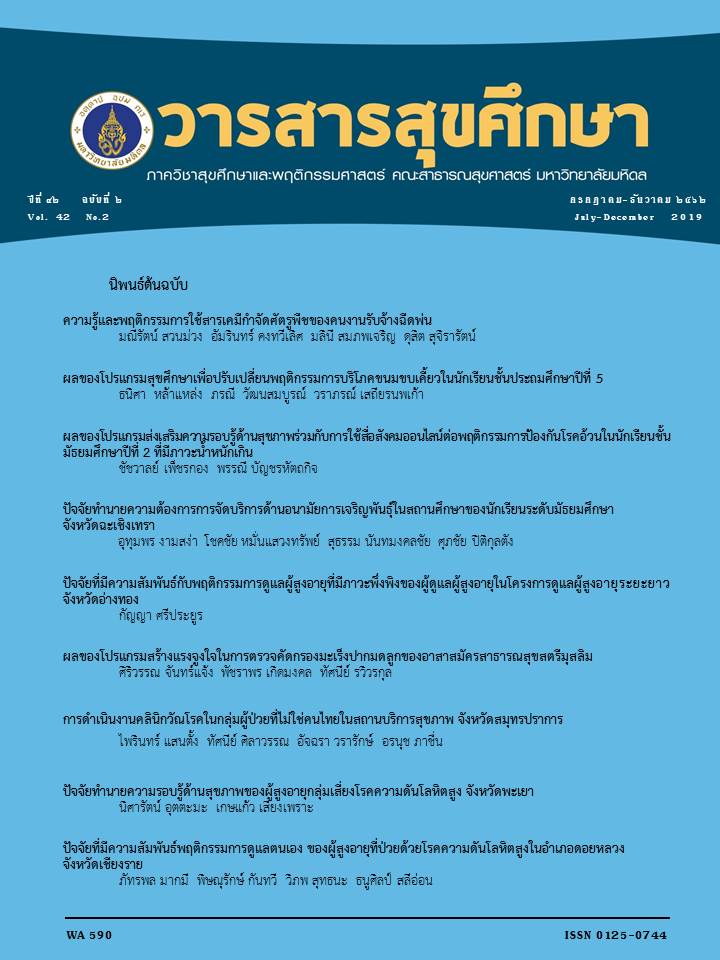Effect of Fluoride to Haematological Disorder and Occurrence of Dental Flurosis Among School Children in Omkoi District, Chiang Mai : A Preliminaty Situation and Probable Cause Study of Haematological Disorders and Dental Fluorosis in the Areas
Main Article Content
Abstract
This research aimed to study the haematological disorder and dental fluorosis situation in area of high fluoride risk. The environmental and behavioral factors related to the situation were the independent variable. The total 301 school children included in the study, 38.87% were in high fluoride area and 61.13% were in low fluoride area. The results showed that average fluoride concentration of drinking and cooking water of the high fluoride group were 0.816 ± 1.965 mg/L and 0.845 ± 2.081 mg/L respectively. The average fluoride concentrations of drinking and cooking water of the low fluoride group were 0.243 ± 0.422 mg/L and 0.321 ± 0.501 mg/L respectively. This study showed the relationship between environmental and behavioral factors and haematological disorders. In high fluoride area, the prevalence of dental fluorosis was 70.1 % whereas the prevalence of dental fluorosis in subjects that had intake excessive fluoride from cooking water was 64.1 %. The strategies to reduce number of fluorosis in children were 1) identify risk group categorized by age and related variable 2) taking specific surveillance and monitoring measures based on risk groups classified 3) Establish a participatory preventive surveillance measures of fluoride exposure 4) Control of consuming water quality systematically 5) Study and develop alternatives for drinking water management in communities through the participation process. In addition, the prediction model of association between haematological disorders and dental fluorosis should be formulated.

